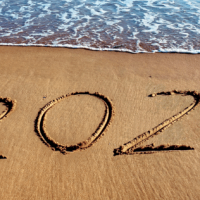Top Marketing Trends 2022
As marketeers we tend to evolve in the ever-changing digital landscape. If last year was about recovering from a global Pandemic, 2022 will be about responding to it. In this blog post I would like to address five different (digital) marketing trends for the coming year. This may help you define new strategies and build stronger, dynamic customer experiences.
Engage in the conversation
Feel free to engage in the conversation by reaching out to the author directly or by getting in touch with 4P square.
1. No more cookies
Not literally speaking of course, but I’m sure you have heard Google’s announcement that it would end support to their third-party cookies in the Google Chrome browser in 2022. Given the fact Google Chrome is the most popular browser with almost 70% market share (!). This will have a major impact on all of us marketeers, advertisers & businesses. It will require some drastic changes.
However, tracking users across the web is and has been essential to many businesses and advertisers across industries. However, the user privacy concerns have become more and more important to all internet users with the implementation of the GDPR regulations. Think of the opt-in and opt-out for third-party cookies and tracking. This must be stated when landing on a website.
Solution?
Now, I hear you say; “is there a fix around this?”. For now, the answer is no. Companies are looking into zero-party data as a way of interacting with their online audience(s) via the website. This can easily be done via surveys, gamification and seaming less CRM integration in order to boost brand interaction.
When reading the following trends, keep this one in mind as it will most likely be incremental for the rest of your marketing strategies & roll-out activities.
2. Meta is everywhere
You can take this one literally. As Facebook recently – officially – changed its name to Meta. Creating a name for your parent company is a logical step (think of Google and Alphabet) – the name choice is what matters.
Metaverse & virtual augmented experiences
To clarify, Meta stands for Metaverse, which is a term for virtual and augmented experiences. This could be seen as a big bet on the future of the web and a clear future direction. As marketeers, we should definitely explore opportunities for businesses in this space, if not done already.
Above all, numbers show Facebook users are still growing (up to 3 billion now) and they are still growing every month. In other words: keep these platforms into your marketing strategies.
3. Designing a human-first data experience
Marketeers should cultivate the client’s trust through their customer data practices and keep in mind the human-first approach. As you may know, there is a thin line between being helpful/relevant and being creepy when it comes to deploying this type of data practice.
A way of doing so can be in the form of giving the customer control of their own data journey. Empowering them and giving them transparency when going through the different steps of the customer journey.
4. Embrace personalization
This builds up on the previous trend. In 2022, we will have more channels than before for marketeers to reach their audiences. The type of content (video, online articles, podcasts, and so on) should always be based on different audiences’ target groups. Figure out for your specific industry & brand what works best.
Hybrid approach
Being on different channels is simply not enough. You should always try to personalize your message respectively to the different audience groups. Keep in mind, the key still is consistency & frequency (but do not overdo). The hybrid approach still seems the most relevant at this moment in time. Think of webinars, podcasts, … with the opportunity to add a physical touch to it (networking, round table sessions, etc.).
5. Authentic inclusivity
Not so much of a trend but rather a social demographic fact as the consumer population diversifies at a rapid pace. Think of race and ethnicity, sexual orientation or differences in abilities. It is important for brands to authentically reflect a range of backgrounds within their outgoing messaging and brand communication. As shown in Deloitte’s latest GMT study the companies that take D&I initiatives across the workforce, marketplace, … will be the fastest growing brands in the near future as consumers are more likely to buy from brands that address social inequalities (especially in FMCG industries).
Please do realize that your customers can tell the difference between a forced attempt at inclusion and a genuine one. So simply trying to find a stock photo with every possible demographic crammed into it won’t do the trick.
Conclusion
The year 2022 will bring some fundamental changes to the way we, as marketeers, market brands and products. The end of the cookies will be a challenging nut to crack. Many businesses have been relying heavily on this. The future will have to bring more clarity, so it is definitely an interesting topic to further explore.
2022 and looking ahead
One thing is for sure in 2022 – the overall consumer will become even more demanding. Therefore, keep experimenting, measure and adapt where needed. 2022 is going to be exciting. Feel free to let us know what your biggest challenges are for 2022!
About the author
This article was written by Alexander Adams, a marketing consultant at 4P Square. He has a particular interest in (digital) branding, and he brings expertise to the overall product marketing strategy. He’s been active in various industries, ranging from tech to automotive, where he connected dots between digital marketing & sales. You can find him on LinkedIn or reach out to him directly via the 4P Square contact form.


